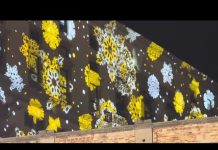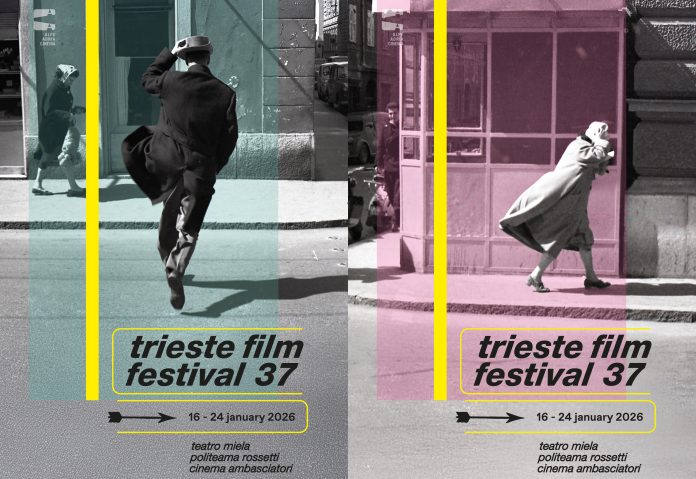by InTrieste
The city’s famously fierce bora wind, long a defining presence in local life, takes on a new symbolic role at the 37th Trieste Film Festival, which will run from Jan. 16 to 24, 2026. This year’s official posters pay tribute to Ugo Borsatti, the Triestine photographer whose black-and-white images chronicled the city from the postwar era through the early 1990s.
The selected photographs, drawn from the Museums of History and Art of Trieste Photo Library and the extensive Foto Omnia Archives, depict everyday scenes from the 1950s in which residents battle gusts along the city’s streets. In one, a man and a woman bend into the wind, gripping their coats and hats. For festival organizers, the images highlight a natural force that has shaped not only local habits but also the collective identity of Trieste.
Borsatti, who died in 2025 at age 98, began taking photographs as a teenager during World War II. After enduring forced labor, he established the Foto Omnia studio in 1952 and went on to work for major Italian newspapers, including Il Gazzettino, Tuttosport, Corriere della Sera and Messaggero Veneto. His archive — nearly half a million photographs — is now preserved by the city’s museum system.
The Trieste Film Festival, considered Italy’s leading event dedicated to Central and Eastern European cinema, was founded in 1989 on the eve of the fall of the Berlin Wall. Over the decades, it has become a platform for exploring social and political transformations across the region. This year’s edition will present feature films, documentaries, short films, master classes and discussions with both established and emerging filmmakers.
The festival continues its tradition of highlighting women in cinema through “Wild Roses,” a section devoted to European female directors. This year, the focus turns to Slovenia, with a program curated by Nerina T. Kocjančič of the Slovenian Film Center in Ljubljana. Thirteen feature films — including both fiction and documentary — along with ten short films by Slovenian women directors will be showcased.
The 2026 festival arrives, fittingly, during the height of Trieste’s winter winds. With a nod to that seasonal reality, organizers have placed the bora at the forefront of the festival’s visual identity, interpreting it as both a local emblem and a metaphor for resilience and motion — qualities that mirror the region’s cinematic landscape.
Accreditation is now open through the festival’s website. More information is available at triestefilmfestival.it.






























